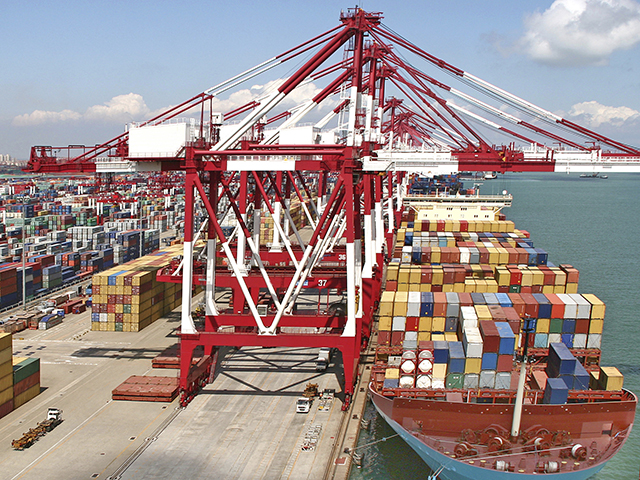Filtered by: Money
In a rather surprising move in the wee hours of Thursday (Manila time), US President Donald Trump sent a letter to President Ferdinand “Bongbong” Marcos Jr. informing the latter that he is despite earlier negotiations to lower the initially announced duty of 17% in April.
In his notice letter, Trump informed Marcos that come August 1, 2025, Washington will charge Manila 20% on any of its products sent into the US.
In the letter—a form letter that was sent to several countries, for the most part with only the name and the tariff rate changed per country—Trump cited the “significant trade deficit” between the US and the Philippines, thus, “we must move away from these long-term, and very persistent, trade deficits engendered by the Philippines tariff, and non-tariff policies and trade barriers.”
Data from the US Trade Representative showed America’s goods trade with the Philippines totaled $23.5 billion in 2024.
Broken down, the US’ goods exports to Manila stood at $9.3 billion, while its imports amounted to $14.2 billion resulting in a trade-in-goods deficit with the Philippines of $4.9 billion in 2024, up 21.8% year-on-year.
Still, Trump told Marcos that the “the 20% number is far less than what is needed to eliminate the trade deficit disparity we have with your country.”
The US head-of-state had been vocal about what he claimed was a “highly imbalanced” trading relationship between America and its partners.
This prompted him to announce in early April his sweeping reciprocal tariff policy across over 100 countries, including the Philippines which was earlier announced to be slapped with before suspending its implementation for 90 days to give way for countries to haggle for a more favorable duty rate.
The 90-day suspension expired on July 8.
In May, a Philippine delegation led by Trade Secretary Cristina Roque, Special Assistant to the President for Investment and Economic Affairs Frederick Go, and Philippine Ambassador to the United States Jose Manuel Romualdez met with US Trade Representative Jamieson Greer and tackled “mutually beneficial ways to strengthen the bilateral relations” amid the 17% tariff rate imposed by the US.
Despite this initial effort, Manila’s trade and investments ministers with Trump’s move to increase the original reciprocal tariff rate for the Philippines by three percentage points.
Go, at a Palace briefing, expressed optimism that the country can forge a free trade agreement (FTA) with America.
Who’s most affected?
Obviously, the most affected sector by Trump’s trade tantrum is the country’s exporters.
Data from the Philippine Statistics Authority (PSA) showed the US was the country’s top export destination in 2024, accounting for 16.6% or $12.14 billion of the total export receipts of $73.27 billion.
“The biggest hit would still be on Philippine exporters with the 20% tariffs/tax, since the US is the Philippines’ biggest export market, accounting for 17% of the total, thereby could slow down Philippine exports sales/demand that, in turn, could indirectly slow down the overall economy,” Rizal Commercial Banking Corp. chief economist Michael Ricafort said.
Philippine Exporters Confederation (PhilExport) president Sergio Ortiz-Luis Jr., for his part, said a 17% or 20% tariff rate for the Philippines “on face value” would still be “okay.”
However, Ortiz-Luis said the problem now lies with the similar rate imposed on Vietnam from the earlier announced 46%.
“Initially, we expected that when we were 17%, the manufacturers would move to the Philippines. Actually, they haven’t moved yet… Even now, even at 17%, we have difficulty competing with Vietnam,” the PhilExport president said.
Ricafort, nonetheless, said Trump’s 20% tariff rate for Philippine products to the US would be a “limited drag on Philippine GDP, as the Philippine economy is less reliant on exports as a source of economic growth.”
“Philippine merchandise exports are three to five times lower compared to major ASEAN countries on a yearly basis,” the bank economist said, noting that a resulting slower economic growth due to other protectionist measures by other nations in retaliation to Trump “could also indirectly weigh on the Philippine economy.”
Philippine Institute for Development Studies (PIDS) senior research fellow John Paolo Rivera said that tariff risks could undermine the country’s export competitiveness, especially as the same regional markets negotiate exemptions or preferential terms.
“For our exporters, I see pressure on pricing and margins where Philippine goods may become less competitive unless we strengthen non-price factors such as logistics, quality, and service. But, there is a window of opportunity. If exporters act fast, we could position the Philippines to attract hand-off orders from countries facing higher tariffs but only with quick adaptation and policy support,” Rivera said.
For labor group Sentro, Trump’s move should be a wake up call for ASRAN to “deepen regional solidarity… not just as a geopolitical bloc but as a more cohesive economic community capable of asserting our collective interest.”
“We must broaden and rebalance our trade relationships, especially with nations that respect sovereign development paths and do not use trade as a political cudgel,” it said.
Trade chief Roque said the country recognizes the concerns of the US regarding trade imbalances and its desire to strengthen domestic manufacturing.
“However, global supply chains are deeply interconnected, and unilateral trade impositions will have adverse effects to the global economy. Thus, we believe in the need for constructive engagement to address trade issues,” she said.
“The DTI, in consultation with other government agencies, will continue to actively engage with our US counterparts toward a balanced and mutually beneficial trade relationship,” she added. — BM, GMA Integrated News






